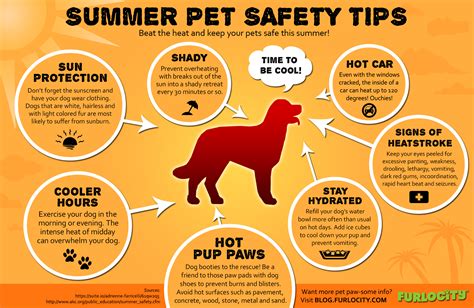Introduction
Pets, particularly dogs, enhance our lives with unwavering companionship and unconditional love. However, ensuring their well-being and安全性requires a comprehensive understanding of pet safety and dog behavior. This guide will delve into crucial aspects of pet care, exploring the latest research and industry best practices.

Pet Safety
Physical Safety
- Vaccinations: Regular vaccinations are essential to protect pets from life-threatening diseases such as rabies, parvovirus, and distemper. According to the American Veterinary Medical Association (AVMA), over 90% of dogs and cats should receive core vaccinations.
- Parasite Control: Fleas, ticks, and worms can cause discomfort, health problems, and even death. Regular flea and tick treatments, as well as dewormings, are crucial for pet well-being.
- Home Environment: Pets spend a significant amount of time indoors, so ensuring a safe home environment is paramount. Remove potential hazards such as toxic plants, loose wires, and cleaning products.
Emotional Safety
- Socialization: Early socialization is key to developing well-adjusted dogs. Exposing puppies to various people, animals, and environments helps them learn appropriate behaviors and reduce anxiety.
- Training: Basic obedience training is crucial for both pet safety and owner convenience. Commands such as sit, stay, come, and heel provide structure and minimize potential risks.
Dog Behavior
Aggression
- Understanding Causes: Aggression in dogs can stem from various factors, including fear, pain, territoriality, and dominance. Identifying the underlying cause is essential for effective management.
- Prevention: Early socialization, consistent training, and appropriate exercise can significantly reduce the likelihood of aggressive behavior.
- Management: If aggression persists, consult with a certified veterinary behaviorist or professional dog trainer for guidance.
Anxiety
- Common Triggers: Anxiety in dogs can be caused by factors such as separation, thunderstorms, changes in routine, and medical conditions.
- Symptoms: Signs of anxiety include pacing, panting, drooling, and destructive behavior.
- Treatment: Addressing anxiety requires a multi-faceted approach, including behavioral therapy, medication, and environmental enrichment.
Other Behavioral Issues
- Housetraining: Housetraining is an essential aspect of dog ownership. Establish consistent routines, reward good behavior, and consult with a veterinarian to rule out any underlying medical issues.
- Barking: Excessive barking can be a nuisance and a sign of underlying anxiety or boredom. Address the root cause and implement training techniques to reduce barking.
- Chewing: Destructive chewing is often a sign of boredom or separation anxiety. Provide appropriate chew toys, engage in regular playtime, and consider consulting with a professional if chewing persists.
Pet Safety and Dog Behavior: Tables for Reference
| Vaccinations for Dogs and Cats | Parasite Control for Pets | Home Safety Hazards for Pets |
|---|---|---|
| Core vaccinations: Rabies, parvovirus, distemper | Fleas: Monthly topical treatment or oral medication | Toxic plants: Lilies, azaleas, oleanders |
| Non-core vaccinations: Bordetella, Lyme disease, canine flu | Ticks: Regular tick checks and removal | Loose wires: Potential for electrocution |
| Vaccination schedule: Consult with a veterinarian | Worms: Monthly or quarterly deworming | Cleaning products: Store securely out of reach |
| Common Causes of Dog Aggression | Triggers for Dog Anxiety | Behavioral Issues in Dogs |
|---|---|---|
| Fear | Separation | Housetraining |
| Pain | Thunderstorms | Barking |
| Territoriality | Changes in routine | Chewing |
| Dominance | Medical conditions |
FAQs on Pet Safety and Dog Behavior
- How often should I vaccinate my pet? Consult with a veterinarian for a customized vaccination schedule.
- What are the most effective ways to prevent parasites in pets? Regular flea and tick treatments, as well as dewormings.
- How can I socialize my puppy? Expose them to a variety of people, animals, and environments in a positive and controlled manner.
- What are the signs of dog aggression? Growling, snarling, snapping, or biting.
- How can I reduce my dog’s anxiety? Address the underlying cause, consider behavioral therapy, and provide environmental enrichment.
- What are some common housetraining mistakes? Lack of consistency, infrequent potty breaks, and punishing accidents.
- How can I stop my dog from chewing destructively? Provide appropriate chew toys, engage in regular playtime, and consider consulting with a professional.
- What are the potential risks of excessive barking? Nuisance to neighbors, stress for the dog, and possible vocal cord damage.
Conclusion
Pet safety and dog behavior are intertwined aspects of responsible pet ownership. By understanding the principles outlined in this comprehensive guide, you can ensure the well-being of your furry companion and foster a harmonious relationship built on love, safety, and understanding.
Remember to consult with a trusted veterinarian or certified animal behaviorist for personalized guidance and support. By prioritizing pet safety and addressing behavioral concerns, you can create a fulfilling and enriching life for your beloved dog.





















